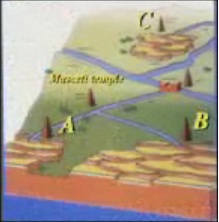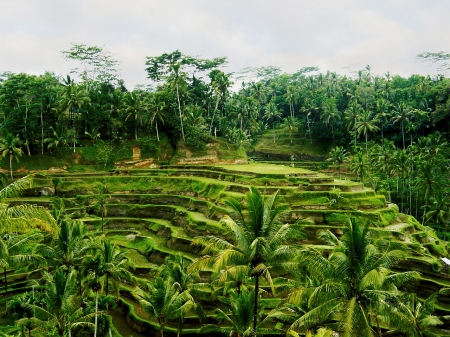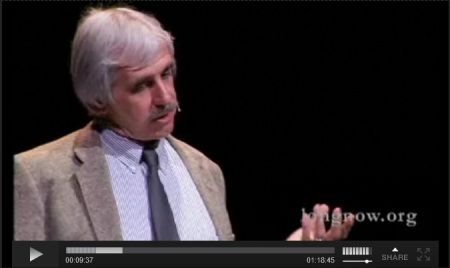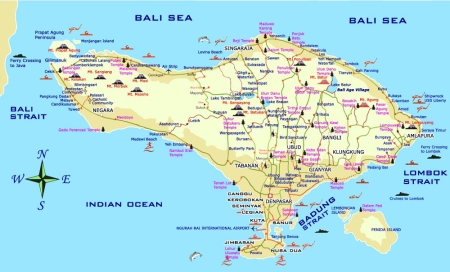The Indonesian island of Bali, with around 1.6 million estimated farmers, has a direct democratic system of water distribution despite its irrigation system being completely hierarchical. Water governance is deeply intertwined in the rituals, the belief-system, the identity, the infrastructure, and even the notion of time. With channels and canals that are often over a thousand years old, the agricultural system and the ecology of the island have become deeply intertwined, acting as one organism. Efforts to drastically change Balinese agriculture in the seventies during the Green Revolution in Indonesia wreaked great havoc on the ancient and sophisticated system, and over the years the modernization efforts were withdrawn.
Infrastructure
While one might be surprised at the deeply democratic nature of the island, despite it appearing rigidly hierarchical, the reasons behind the intense cooperation would be even harder to pick up on. Interestingly, it is the threat of pests that holds everyone accountable. As pests are deterred when fields are flooded, if an upstream neighbor decided to take more water, and diverted less to the downstream neighbor, then pests would attack crops upstream. Stephen Lansing, an anthropologist who spent years studying the water system and Balinese society, developed a computer simulation of the system on a large scale, and described how it worked, adjusting variables to show how the system would develop, optimize, and collapse. As he and his colleagues ran the simulation, they determined that as farmers would observe their neighbors farms, they would copy and synchronize each others cropping patterns, and a synchrony would develop across the whole island. While the model showed mathematically how the infrastructure self-organized, Lansing observed and studied the superstructure of Balinese society to explain much deeper synchrony. While the belief-system, rituals and time-keeping systems of the Balinese might seem cumbersome and superstitious to outsiders, Lansing showed how they have deep functional significance in the island-wide production system.

Subak system. Each temple serves a subak, and temples further upstream serve the subaks further downstream
Superstructure
While they are identified as Hindus, the Balinese call their belief-system* Āgama Tirta, or “Belief-system of Water”. Along every major point of diversion along the irrigation system is a water temple devoted to the Water Goddess, Dewi Danu. All the farms downstream of a temple form a Subak, the most basic self-governing unit in Balinese society. The temple is the public space where gatherings happen constantly, whether for practical matters or for festivals and celebrations. When agricultural matters are discussed, all farmers participate and must abandon all rules of interaction based on caste or be reprimanded with fines. The Balinese devote tremendous amounts of time to temple activities, where everyone expresses themselves and the arts flourish to an unparalleled degree, and around 50 holidays and more festivals happen in a year.
In a yearly holiday, farmers across the entire island gather at the temples upstream. People from over 200 villages gather at the temple furthest upstream, the supreme temple of Dewi Danu. The temple sits on the edge of a Mount Batur, an active volcano, flanked by Lake Batur, a massive freshwater crater lake. Mount Batur is key to the ecology of Bali, as rain dissolves phosphate along the edges, and enters the water, which combined with the nitrogen-fixing azolla provides constant sustenance for agriculture throughout the island. Visitors collect holywater from the steam of the volcano, which is brought back to their respective villages, where more rituals are performed. In this way, each subak and the entire island maintain ongoing synchrony. While in the Western calendar there are two concurrent layers of weeks and months, in the Balinese calendar there are 8 concurrent weeks that correspond with rituals, markets, and even social identities. As the solar cycle is of little relevance in the perennially warm climate, the 210 day growing cycle of rice forms the basis of a year. Their calendar is in turn synchronized with the Indian Ashaka calendar, and the modern Western calendar.
*While some people use the term science or religion, belief-system was chosen because it does not carry controversial preconceived notions of the exclusive distinction of science vs. religion rooted in the Western tradition

Balance and perfection is a deeply ingrained aesthetic in the Balinese psyche, which they seek in art, agriculture, and spirit. Well maintained rice terraces are likened to jewels, representing purity that one also likewise strives for within.
Coming Around
Though the Indonesian Green Revolution ripped and tore the complex fabric of Bali’s agricultural system, the island retained enough cohesion and rhythm to survive the onslaught. For good intentions, the Green Revolution was pushed throughout Indonesia to feed its expanding, crowded population. The use of chemical inputs was pushed on Bali as a patriotic duty, and farmers were advanced inputs. As the farmers used the inputs, the land became dependent on them, which in turn made them dependent on using the chemicals. This caused great harm to the ecological balance throughout the island, and offshore coral reefs were poisoned and suffocated. As the agricultural planners observed the sophistication of the ancient system and that fertility could be naturally maintained by the geology of the island, they withdrew aggressive promotion, and many now hold the traditional system in high esteem. While some farmers continue to be dependent on expensive expensive inputs, the use seems to be gradually reducing.
Bali is a lesson learned in that there is much more than meets the eye, and one must not judge until a society is understood wisely. The example that Bali demonstrates, that a hierarchical system does not imply a hierarchical society, carries profound meaning that we can all learn from. It also demonstrates that societal balance can exist for hundreds or thousands of years, and only deepen and grow richer with age.
J. Stephen Lansing: A Thousand Years in Bali
The Long Now Foundation

A must-see video. Though long, extremely interesting and full of good detail. Divided into small 1-5 minute chapters.
More multimedia and writing from Stephen Lansing on his website:
http://www.u.arizona.edu/~jlansing/J._Stephen_Lansing/Welcome.html




December 16, 2009 at 6:39 am |
I emailed Stephen Lansing about this blog post, and he replied saying that there is a proposal in the works to make the irrigation system a world heritage site. On his website it says:
Rice Terraces and Water Temples of Bali:
A Proposal to create a UNESCO World Heritage Cultural Landscape
(This proposal would establish a World Heritage site in Bali to support and protect Balinese farmers, subaks, water temple networks, lakes, rivers and forests)
The “Nomination Dossier” explains the system at length, and among other things, gives information about some subaks, and gives lists of the temples and information and their coordinates – a great project for a public google map.
http://www.u.arizona.edu/~jlansing/J._Stephen_Lansing/Current_Projects.html